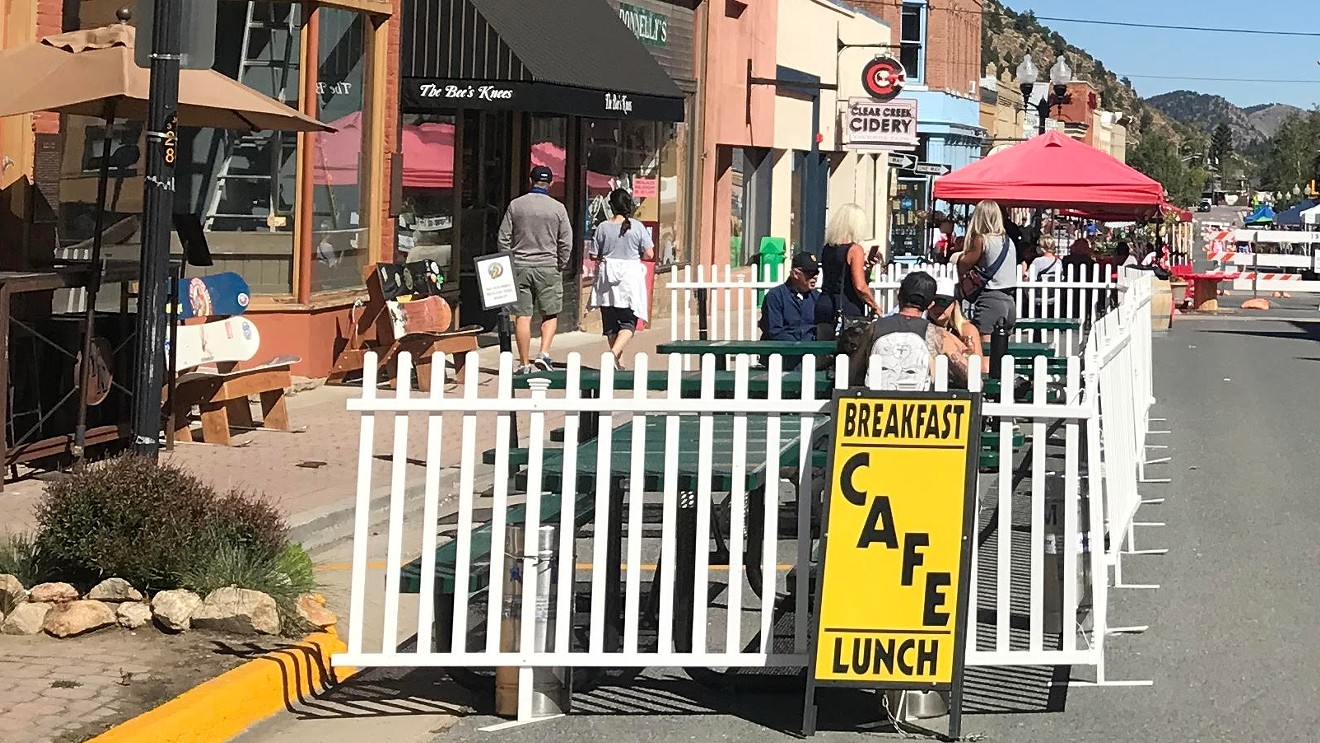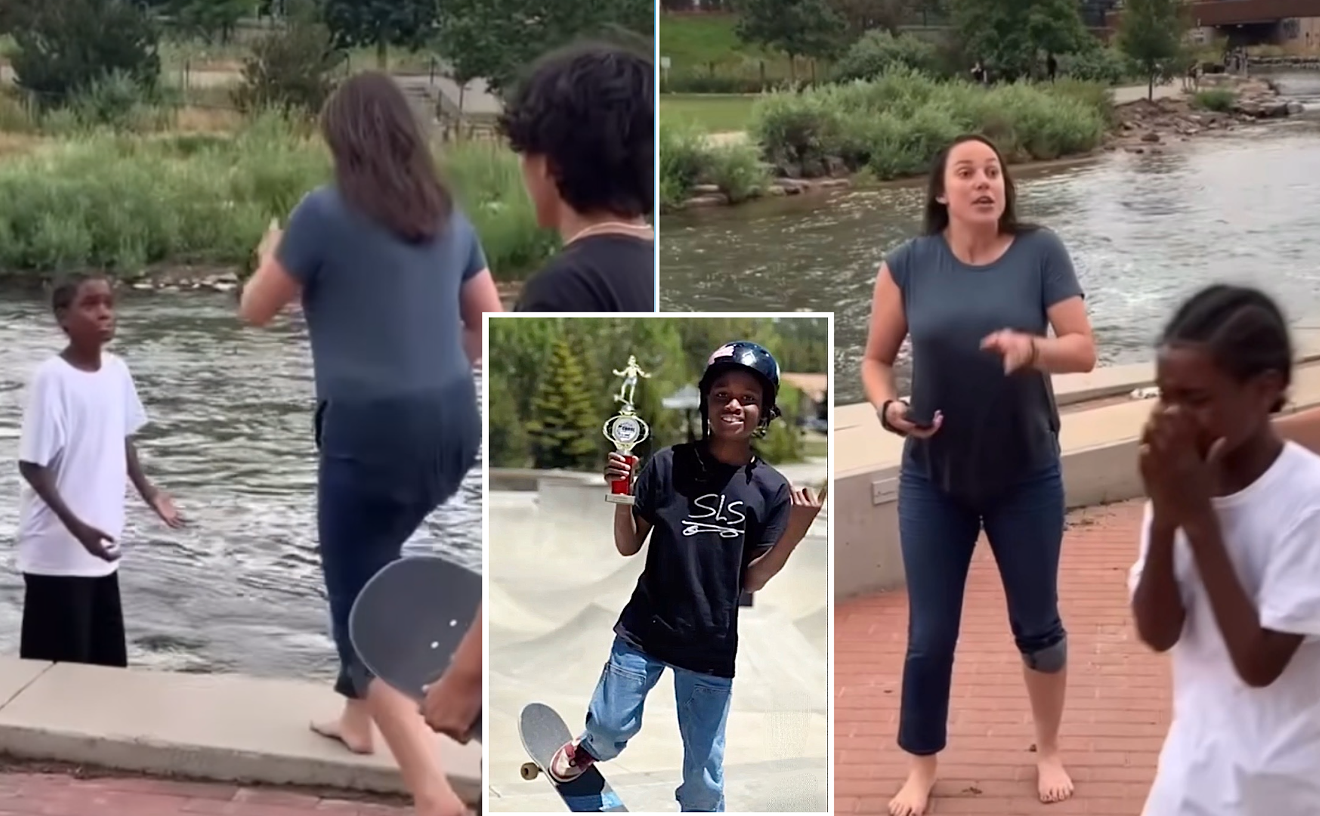To that end, the Colorado Department of Public Health and Environment has released what it describes as "guidance for temporary outdoor structures for restaurants and events" — information intended to "help restaurants safely accommodate customers outdoors in the upcoming months using temporary structures or pop-up structures."
The rules governing these structures can be complicated. Depending upon their design, the new additions may still fall under the state's indoor regulations, and capacity allowances vary widely depending on their size and where the communities in which they're located stand on Colorado's new COVID-19 dial framework.
The distinctions related to the latter are described graphically in the chart below. Note that counties such as Gilpin, Mesa and Rio Blanco are now in the Protect Our Neighbors phase, while Denver qualifies for Safer at Home Level 2, according to remarks made by Mayor Michael Hancock during a September 24 press conference.
Here are the CDPHE's guidelines for what qualifies as an indoor or outdoor structure, along with specific explanations for each:
4 walls with ceiling: Indoors
3 walls closed, 1 side open: Indoors
Explanation: "Having 3-4 walls obstructs air flow, and will confine air."
2 non-adjacent sides open enough to provide air flow through the space: Outdoors
Explanation: "With outdoor scenarios, open-air ventilation that lacks the confinement created by wall structures allows air movement. Air movement allows droplets/aerosols containing the COVID-19 virus to disperse rapidly to low concentrations, and move 'out' of the space. When there is no air movement, as is the case in most indoor environments, virus particles are trapped inside the space. The virus then recirculates and the concentration of the virus increases as people continue to breathe out the virus."
2 adjacent walls closed and 2 adjacent sides open: Indoors
Explanation: "Unlike the scenario described above, air circulation is likely to decrease in the corner where the two 'closed' adjacent walls meet."
2 adjacent walls closed and 2 adjacent sides open without a roof: Outdoors
Explanation: "If there is no roof or canopy, air can circulate in a manner that is akin to typical circulation outdoors."
Ceilings, roofs, umbrellas, or canopies with no walls: Outdoors
Explanation: "This allows open-air ventilation and rapid dispersal of droplets/aerosols."
Single party structures that allow for ventilation between uses (e.g., igloos or bubbles): Outdoors
Explanation: Regardless of the number of walls, if the structure can be aired out in between parties it is considered an outdoor setting. This functions as a private room for a single party outdoors.
Specifically, the CDPHE determines if a setting is outdoor or indoor "based on the typical level of ventilation for the setting. Settings that provide air flow comparable to levels of being outdoors, allowing the virus to disperse rapidly and move out of the space are considered outdoor settings. If a setting does not have adequate ventilation, the air will become trapped inside and the virus will recirculate and become more concentrated. Those are considered indoor settings."
The document adds: "Outdoor settings have open-air ventilation that allows air movement. Air movement allows droplets and aerosols containing the COVID-19 virus to disperse rapidly to low concentrations, and move "out" of the space. When there is no air movement, as is the case in most indoor environments, virus particles are trapped inside the space. The virus then recirculates and the concentration of the virus increases as people continue to breathe out the virus."
The department has created a separate set of recommendations related to maximizing ventilation indoors, including suggestions related to HVAC systems. But officials stress that "increasing ventilation is not enough to protect people from COVID-19. You should increase ventilation and follow other best practices recommended by CDC [Centers for Disease Control and Prevention] and others, including disinfecting, wearing masks, and social distancing. Increasing ventilation can be part of a plan to protect people indoors."
Click to read the CDPHE's guidance for outdoor dining structures.














